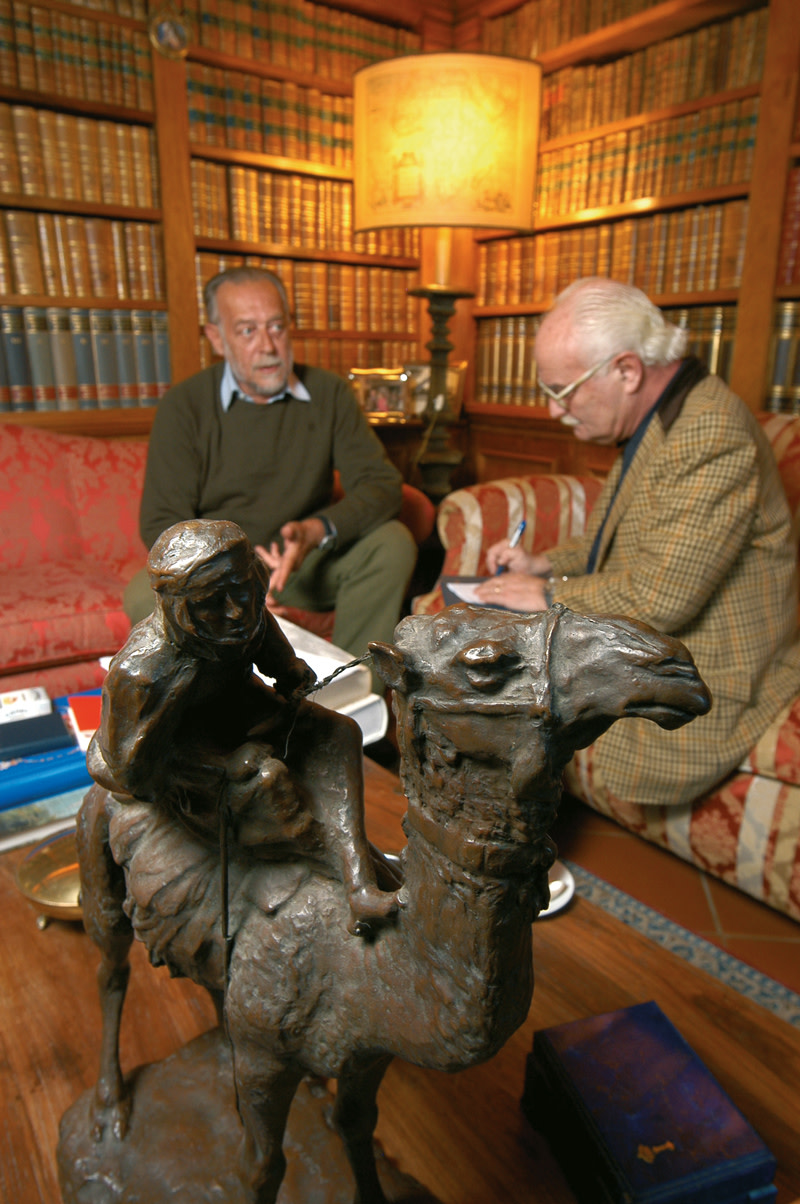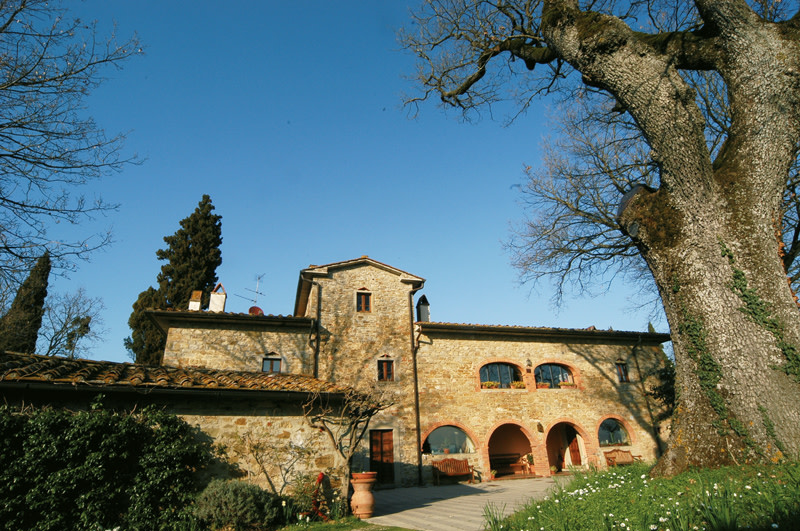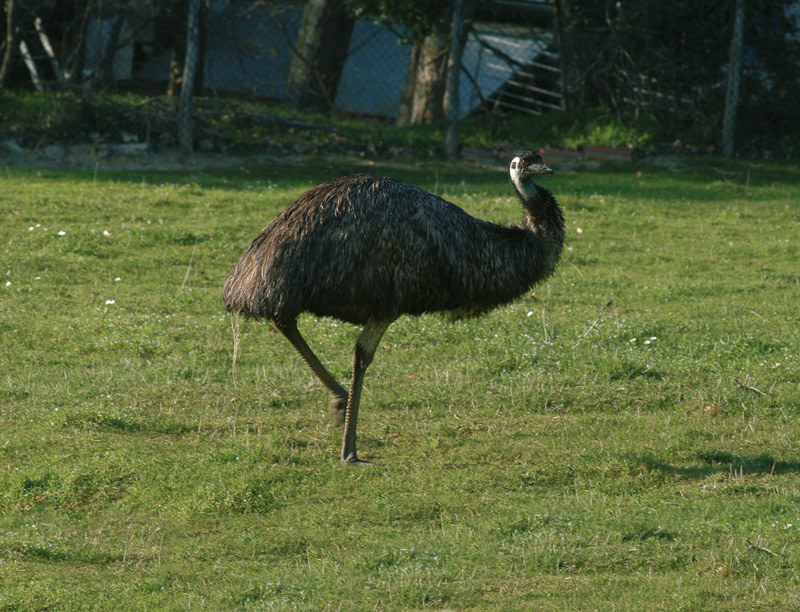A Tuscan' portrait of Amedeo di Savoia
In our interview published on 'Firenze Made in Tuscany', June 2007
Imagine a spring afternoon in a country house on the hills of Castiglion Fibocchi enjoying a cup of coffee among friends. The place is as unassuming as the host. A driveway lined with young cypresses, an automatic gate, a meadow white with daisies and pens for goats, sheep and ostriches. A classic Tuscan style house, although the unplastered exterior walls are more common in Umbria than in Tuscany. He welcomes us is in what were once the stables and now is a charming living-room, with a big stone fireplace, a cherry-wood bookcase full of history books, comfortable sofas and many rugs hiding the typical terracotta-tiled floor.
 Amedeo di Savoia in Castiglion Fibocchi with Gianni Mercatali
Amedeo di Savoia in Castiglion Fibocchi with Gianni MercataliThe host is the Duke Amedeo d’Aosta, a friendly and nice person. He is the youngest prisoner of World War II because when he was only six months old, following the Italian armistice of September 8 1943, he was deported by the Germans in an Austrian concentration camp with his mother. The many photos well describe his adventurous life. He was born in Florence the day after the bombing of the Rifredi train station. He came back to Florence shortly after the end of his imprisonment. He then went to Venice, where he studied at the Morosini naval college, and to England. He attended the naval college in Leghorn and became naval officer.
 The house of Amedeo di Savoia in Castiglion Fibocchi
The house of Amedeo di Savoia in Castiglion FibocchiWhen he tells us about his passion for travelling, but never as a tourist, we end up talking about food and ethnic cuisine of which he is a true fan. He loves cooking and does it often, sometimes with his wife Silvia Paternò, an excellent cook herself. “Eating frugally- he says- is a habit of the Savoia Family, a very Piedmontese habit”. During his trips, that brought him to 120 countries, he is always intrigued by the local cuisine. “As far as food is concerned, I’ve had some really unique experiences”. In a Tuareg tent, he ate a goat’s eye, in Nairobi he tasted crocodile meat and in Uganda grasshoppers which – he says- taste like crawfish. He inherited the passion for Africa from his family. At the beginning of the 30s, Mussolini asked his uncle Amedeo to form two Meharist regiments (regiment of camel riders) in Libya. He loves spicy food. In fact, his favourite dish is chicken with ginger: a simple roast chicken, cut into four pieces, spiced with ginger and rewarmed in the oven and served with a sauce made with butter-sautéed onions and ginger powder. “I love the Tuscan countryside, peasant wine and the simple cooking of this extraordinary region”.
 A peacock in the garden of Amedeo di Savoia's Tuscan estate
A peacock in the garden of Amedeo di Savoia's Tuscan estateHe started making wine in his former estate called Borro and today he does the same in the Isle of Pantelleria. For that matter, the Savoia Family, that became related to the Borgognas in the 13th century, have been making wine since then. The Duke discovered Pantelleria fifteen years ago and fell in love with it at first sight. Today he owns a house with a botanical garden containing over 1500 plants and a vegetable garden with rosemary, sage and mint. He has been making an excellent “Passito di Pantelleria” (sweet wine) for six years . The wine label shows the family coat of arms. In Pantelleria he prefers diving to fishing. “I like fish but also meat, especially game”. Strange to say, only the female members of the Savoia Family used to go hunting. The Duke’s grandmother, Elena of France, holds the record of getting most elephant tusks.
In the meantime, a maid served us fragrant coffee.








